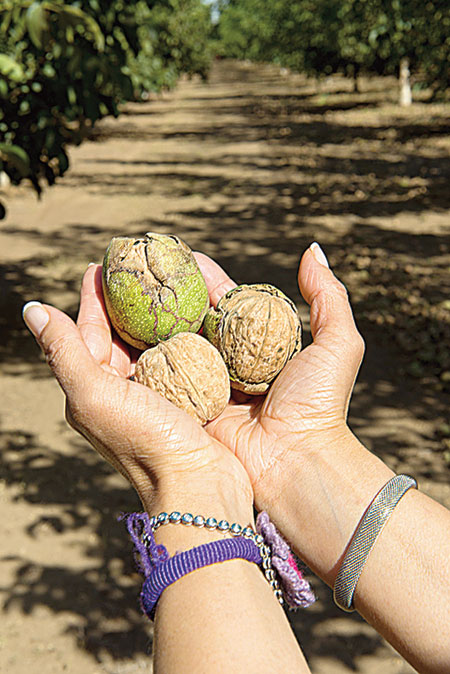Getting nutty
 |
|
CALIFORNIA DREAMING: Three-fourths of the global walnut harvest comes from the United States. [Photo provided to Shanghai Star] |
Walnut production from California is three-fourths of the world trade. In China, three to four out of 10 walnuts you eat may be from California, according to California Walnut Commission.
From a nutritional perspective, walnuts from China and America are not very different. In China, machinery is little used in the cultivation, harvest and processing of walnuts. Many machines are used in the process in the United States.
In Linden of San Joaquin County, California, on Sambado’s ranch, walnuts are shaken off the trees when they ripe, loaded on trucks, cleaned and sorted. All the work is done with trucks, wind-blowers and other machinery. The highly efficient and scientific processing ensures food safety and high quality of Californian walnuts.
Of the walnuts imported to China, some are shelled, sold in pieces, and made into walnut drinks, and some are used in bakeries and some are sold direct, to top up China’s walnut harvest when it is low.
Walnuts and other nuts like almond, hazelnuts and pine nuts, take up a significant part of the Mediterranean diet.
Walter Willett of Harvard University’s school of public health defined the Mediterranean diet to emphasize "abundant plant food, fresh fruit as the typical daily dessert, olive oil as the principal source of fat", as well as dairy products, eggs, fish and meat, all in a moderate amount.
People from all over the world eat quite differently. In North America and most of Europe, the consumption of meat and dairy products is prominent, while in China and several other Asian countries people tend to eat more carbohydrates than others. Neither of these diet patterns is ideal. Nutritionists from both China and the US now recommend the Mediterranean diet.
















